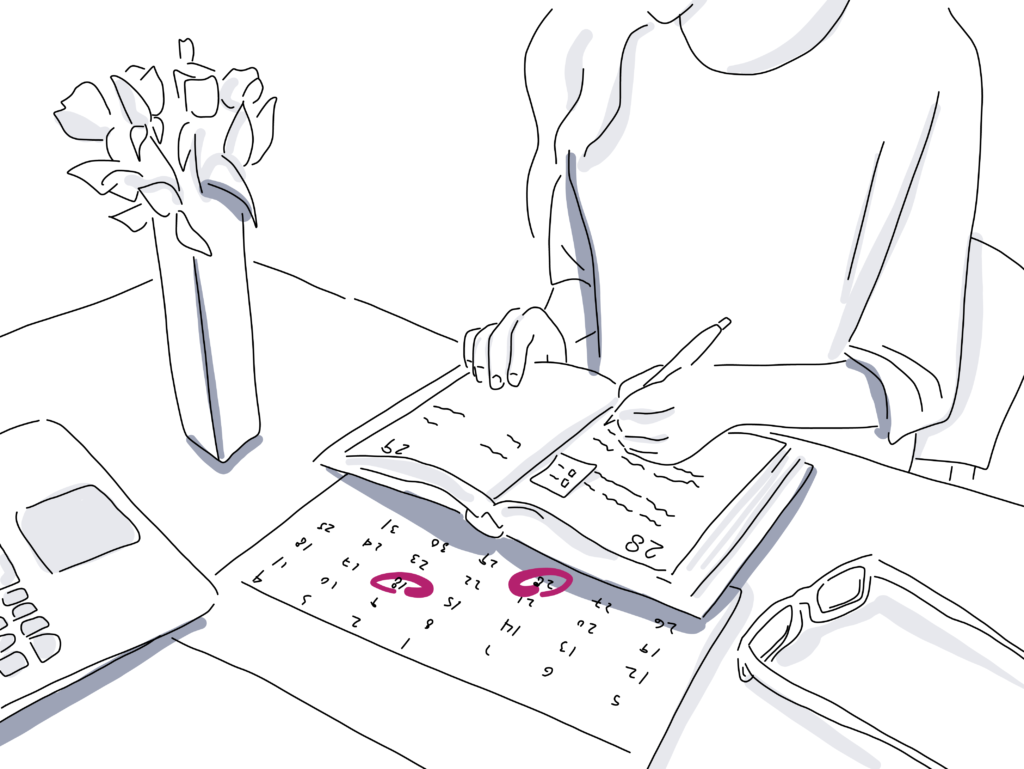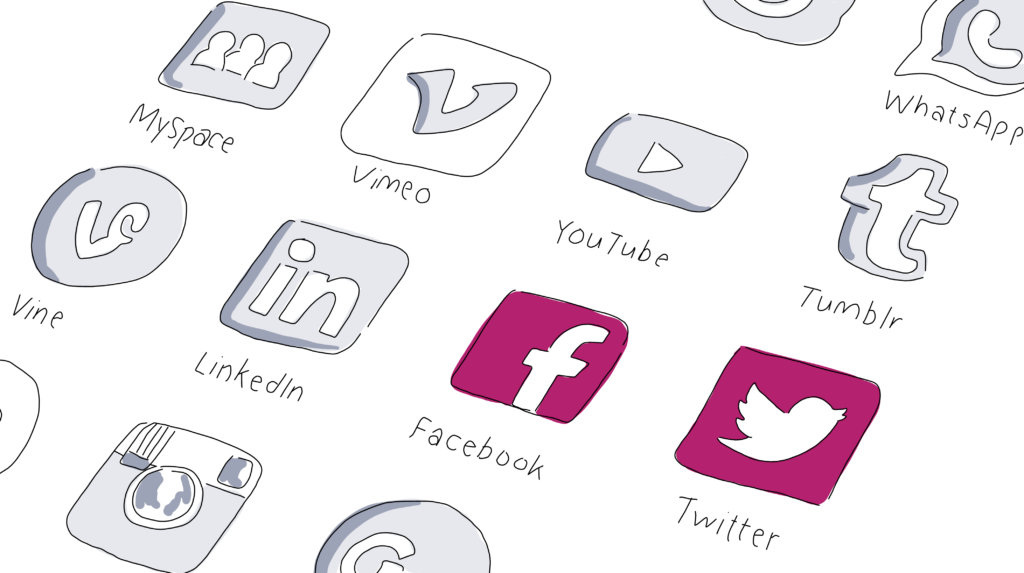
How to Write a Winning Event Sponsorship Proposal
Today the competition for event sponsorship dollars is greater than ever. Event producers find themselves under immense pressure to creatively put together new and fresh sponsorship proposals. Standard packages can’t make the grade in today’s world. So, here are our ideas for truly stand-out sponsorship proposals.
But first let’s cover the basics, shall we?
How to write & send a sponsorship proposal
For most event planners (particularly those involved in the B2B side of things), securing sponsors is rated as one of the top three most challenging aspects of the job. In fact, it’s tied with figuring out how to reach new attendees, and closely followed by booking speakers.
But recruiting a sponsor for your event doesn’t have to be so challenging. This guide will help you systematically create, contact, and match with the best possible event sponsors for you.

Step 1: Get clear on your offer.
Why is your event so great? That’s the question you’re attempting to answer with your proposal. Experts say to include at least one aspect from each of the three following areas in your draft to make a well-rounded argument:
- Expected outcomes. What direct benefits can you realistically promise the sponsor will see by partnering with your event? The most common advantages that influence event sponsors include social media impressions, collecting new leads, and exposing their brand to a new market.
- Target audience. Demographic information and surveys from past events are especially helpful when crafting your proposal. These things demonstrate all the ways a sponsorship is mutually beneficial. Most sponsors get involved with events to get exposure to overlapping markets or access to new demographics.
- Marketing strategy. How do you plan to maximize your event ROI? Let them in on your secrets. A solid plan shows your potential for success and helps them feel confident in their decision.
All in all, your offer should demonstrate value to your potential sponsors. Value is a broad term. But if you look at your event through their eyes, you can quickly figure out which elements are the most appealing for their needs and goals.
Step 2: Draft your sponsorship proposal.
Later on in this post, we’ve included a more detailed description of what should be in the pitch deck and email proposal. There’s also a handy template you can use for your proposals. For now, head to the next step.
Step 3: Create a sponsor wishlist.
Remember, you want to stick to quality over quantity since you’ll be investing a lot of time into each possible option. There are three main criteria you should use when considering a potential sponsor:
- Industry. Is the company a good fit with your company brand? What about your event brand? Your ultimate goal is to find a sponsor with a significant audience cross over.
- Location. Depending on your products or services (especially for industries where remote work is the norm), this might not be that important. But location is a factor worth considering if you expect a partner to send executives to the event or have a heavy hand in the realization of the event itself.
- Past sponsorship history. The best sponsors already know the value of this type of partnership because they’ve done it before and have had positive results. Investigating which events they’ve sponsored in the past will also be another clue into how compatible your audiences and brands are.
If you’re having trouble coming up with names to write down, there are plenty of search engines like Winmo and SponsorMatch that can help you find, match, and connect with sponsors.

Step 4: Determine sponsor compatibility.
There are some useful charts for determining sponsorship compatibility out there on there in the world. But you want to make your own spreadsheet, make sure you answer each of the following questions:
- Do we have an existing relationship or connection?
- Are our marketing objectives similar enough?
- About how many events have they sponsored in the past?
- Are we evenly matched in terms of company and/or audience size?
- Are their business operations of a similar size (local versus international, etc.)?
- Do their key brand elements and values closely match ours?
- Do their primary competitors use event sponsorship to their advantage?
- Which sponsors provide the most opportunity for us to achieve our event objectives?
Finding perfect sponsors is an art, not a science. But assigning a numerical value to these questions on a weighted scale might help you rank the potential partners in order from most compatible to least.
Step 5: Contact the decision makers on your potential sponsor list.
When you email a potential sponsor, make sure you keep the following tips in mind:
Try to contact someone you’ve met in person.
If that’s not an option, try cold-emailing a marketing manager, director, or VP. If they’re a small business with a slimmer staff, contact the head of finance to see if event sponsorship is part of their budget plans this year.
Choose 3 key compatibility metrics to highlight.
You don’t have to tell them you scored them against other options. But make sure you do mention the strongest, most compelling reasons why you’d be a good fit, according to your research. Phrase them in an actionable way that shows how you intend to provide value (rather than just simply listing some benefits you think they might get from the deal).
Remember that the email is all about them, not you.
And you get bonus points for connecting your value proposition to a recent initiative or piece of company news they’ve put out.
Follow all other general email etiquette rules.
Avoid salesy language. Match the tone of the person you’re emailing (no emojis versus all the emojis), and keep everything short, sweet, and to the point. And, when in doubt, a friendly, casual approach is usually better than a super serious, buttoned-up one.
Use a simple email template.
Open with a reference to your existing relationship (whether in person or online). Concisely outline your offer along with your key compatibility points. Close on a specific call to action.
Remember to be strategic with your follow up too. Include at least one more value proposition that you haven’t mentioned before along with some statistical data to back up your claim. Data from past events or relevant social media activity work well for this tactic.
What should be in an event sponsorship proposal
We’ve already touched on some of what should be in a standard pitch. But here’s the whole list, just so you don’t miss anything.
- Your primary audience data online and off, including numbers from past events. The more detailed your demographics are the better.
- A list of specific contributions (beyond just funding) that you’re looking to obtain from sponsor relationships.
- A clear explanation of sponsorship benefits. To make these sound more concrete and not just salesy fluff, back up each statement with your plan for making sure these results are achieved based on any relevant data you have at your disposal.
- A list of branding elements that will be used to help with the sponsor’s brand exposure the event (think signage, booths, logos, etc.).
- Insight into your event experience including past analytics, event survey data, and what event goals you have already achieved.
- Data that will predict the approximate lead value the sponsoring company can look forward to.
- Images of previous events, relevant technologies, and VIP guests.
- A table or diagram that summarizes the proposal in a single page.
- A short (1-2 minute long) video showcasing past events, company culture, or a more detailed version of your event plan.
- Any additional perks or extras not mentioned elsewhere in the proposal, including things like reimbursed accommodations for sponsors or free event tickets for their VIP clients.
If you’re more of a visual learner (or you just prefer to streamline your workflow), we’ve put together a template (keep scrolling!) that will help guide you through the event sponsorship pitch process.

Sponsorship proposal template
Sometimes, an outline is all you need to get started. Here’s our completely free, all-encompassing sponsorship proposal template that hits each of the points we’ve already touched on in this article.
Page 1: The Intro
An eye-catching image paired with your company’s name, the potential sponsor’s name, and the date.
Page 2: Why This Matters
A heartfelt explanation of why your event is important and what sponsors can do to help.
Page 3: Value
All the great, data-supported ways you plan to help them benefit from sponsoring this event.
Page 4: Meet the Team
Photos and brief bios that introduce their direct points of contact and subtly persuade the viewer that your team is both trustworthy and qualified to deliver the proposed value.
Page 5: Sponsorship Levels
If you plan to offer a few different tiers or packages, here’s where you’ll lay out all their options.
Page 6: How They’ll Be Represented
List all the ways they can expect to see their sponsorship represented before, during, and after the event both online and in person.
Page 7+: Terms & Conditions
A sponsorship contract pre-approved by legal (this might take up quite a few pages) with dates and deadlines.
Page 8+: Signature & Thank You
The final page should have space for your potential sponsor to sign on the dotted align. Make sure you thank them and celebrate this new partnership!
More event sponsor proposal templates
If you do a quick Google search for templates like this one, you’ll get thousands of results. Here are some of our favorites:
- Better Proposals. They claim this template won $16M of business. Their drag and drop tool is easy to use and visually stunning, but you do have to pay for it. It’s best for companies who plan to host multiple events that will all need sponsors within the next year.
- Proposify. This customizable tool is simple and well formatted. It’s geared toward events hosted by non-profits, charities, and foundations.
Make your sponsorship proposal stand out 4 ways
At this point, you might feel like your sponsorship proposal is packed with information but is missing that wow factor you need to really stand out. If you’ve already drafted your pitch deck, consider adding one of these four creative ideas to freshen up your content.
1. The social media difference
Exposure on social media can be a huge selling point for some potential sponsors. Here are a few ways to amp up your social media offerings:
Promote the event hashtag early
Begin generating excitement on platforms prior to the event. This is a truly effective low-cost benefit to sponsors. It’s easy to create sponsor-approved posts using the event hashtag before the event (and during and after!).
Give the sponsor real estate in push notifications
Another great benefit is to add sponsor approved push notification from your conference app. Make sure the sponsor’s post is not a straight sales pitch, though. An effective notification positions the sponsor as a thought leader ” it focuses on the sponsor’s benefit to the attendees. Remember that quality content is always the goal.
Go live
Facebook Live events are great benefits to top-level sponsors. One option could be for the conference moderator to hold a Facebook live chat with speakers after an education session. Make sure the speaker is aligned with the sponsor’s products and services. For example, a speaker on how to build a great workplace is perfect for an insurance benefits company. Another option exists for sponsors’ reps to do a Q&A on Facebook during the event.

2. Video series for sponsors
Create a video series based on the live event content as well as specific sponsor goals, such as sales leads or customer retention. Hire a videographer to create videos that feature footage from live event and in-person interviews with speakers, attendees, or sponsor reps. These videos can be for used on the sponsor’s website, social media feeds and newsletters.
3. Create white papers or event recaps
After your event, write a white paper based on the content at the event, as well as interviews with experts. Even if you do not have a content manager on your staff, freelance writers are easy to hire at a reasonable hourly rate. An event recap will be used for a co-branded email to nurture attendees by providing sales leads and branding for sponsors. A longer white paper will be created for the sponsor to use on a platform of their choosing: website, customer newsletter, blog, etc.
4. Offer a VIP Program
A VIP program is a niche approach for top-level sponsorship proposals. This helps sponsors increase sales and lead generation within the framework of a traditional tradeshow.
Conference organizers can create and execute an invitation-only program, where they hand-select guests to participate in sponsors’ exclusive conference within a conference.” This might include exclusive events that include educational programs and intimate speaker sessions. Time and again, this approach has created larger sales pipelines and stronger close rates.
We hope you feel prepared now to take your existing sponsor proposals to a whole new level. And, by adding content benefits to your packages, you are sure to increase your sponsorship revenue and retention.
More like this
How to Get Event Sponsors Your Attendees Will Love
5 Simple Steps To Building Meaningful Relationships With Event Sponsors
4 Ways to Increase Your Event Sponsor ROI
5 Innovative Ways to Attract Sponsors for Your Event
How do you create one of a kind sponsorship proposals? Give us a shout in the comments or on Twitter.

